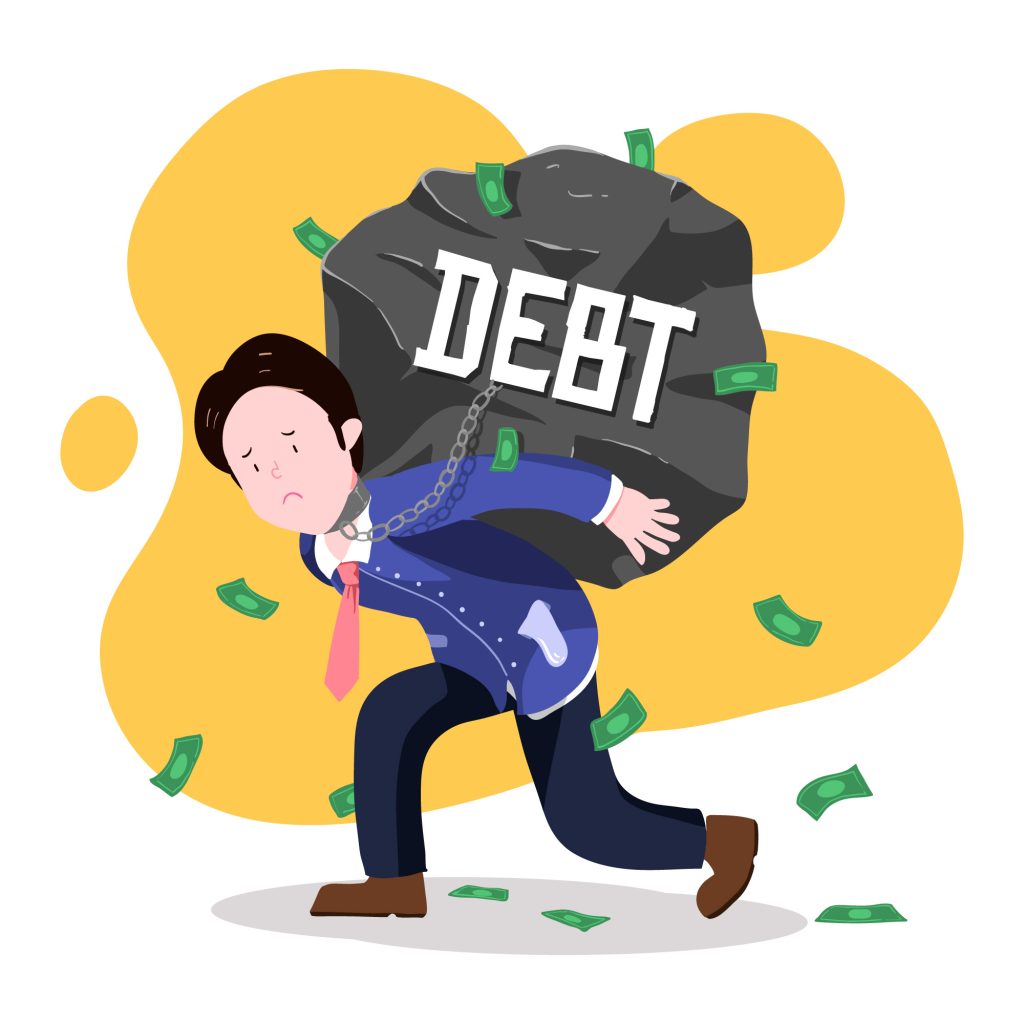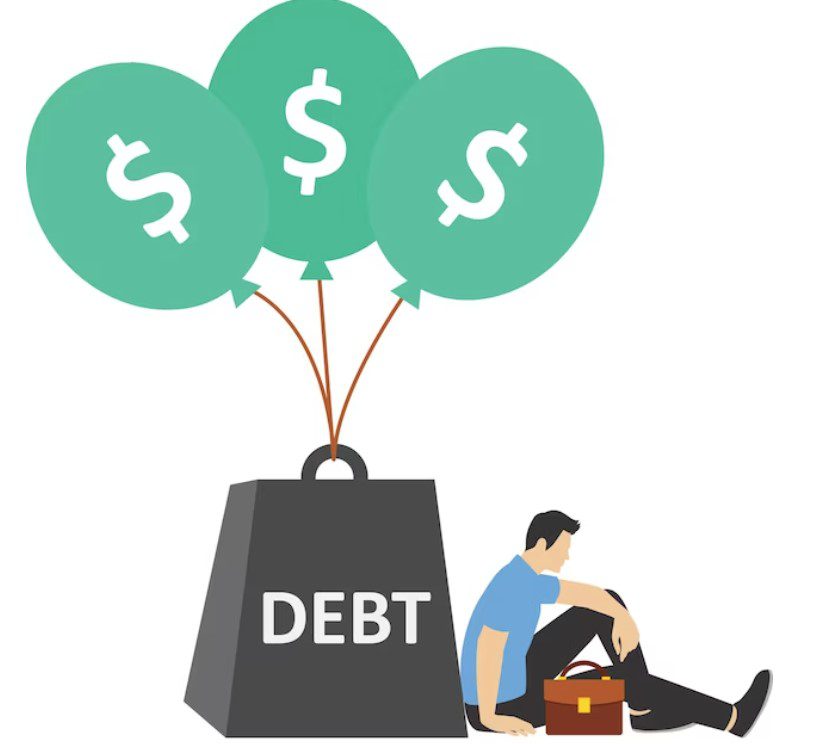In today’s world, where there’s easy access to credit, it is easy to fall into a debt trap without being aware of it. Therefore, it is crucial to understand these signs and take proactive measures before entangling in the suffocating grip of a debt trap.
What is a Debt Trap?
A debt trap is a process in which you are consistently stuck in a cycle of increasing debt, often struggling to make payments due to high-interest rates and fees. It occurs when borrowing money becomes unsustainable, leading to more borrowing to cover existing debts. To avoid falling into debt trap, it is crucial to recognize the warning signs of debt problems before it’s too late.
See Also: Exploring The Best Use Of Credit Card Validators in Finance
7 Obvious Signs of Debt Trap
Let’s take a look at some of the major signs that show that you have either fallen into the debt trap or are gradually falling into the debt trap.
- Borrowing For Everyday Essentials
- Exceeding the 50% Monthly Income Mark EMIs
- No Savings
- Taking New Loans to Repay Existing
- Unable to Pay Credit Cards In Full
- Defaulting on your Payment
- Loan Rejection
Borrowing for Everyday Essentials
One of the first signs of falling into a debt trap is using your credit card or other forms of credit products for regular daily purchases, like groceries. Taking debt regularly for your day-to-day needs means that you are in a tight cash crunch situation and must stop making unnecessary purchases.
Exceeding the 50% Monthly Income Mark for EMIs
If you are splurging more than 50% of your monthly salary on paying EMIs of multiple loans every month, then it’s a sure-shot warning sign of an existing debt problem. We often forget that taking even small loans comes with a heavy price tag as they all accumulate and make a solid debt trap.
No Savings
Having sufficient savings and significant investments prepares you for any financial mishap in the future. If you do not have sufficient savings or emergency funds, you are paving your way into a never-ending debt trap.
Taking New Loans to Repay Existing
Another warning sign that you have debt problems is taking new loans to repay the existing ones. While debt consolidation is one way to eliminate major financial stress on your pocket, constantly taking new loans to pay off the existing debts keeps you in a never-ending loop of a financial crisis.
Unable to Pay Credit Cards in Full
If you fall into a debt trap, you may use your credit cards excessively for almost everything. This leads to exceeding the credit limit, where repaying it every month can be a major pain. That’s when you only pay a minimum amount for the month, leading to more collected debt by the next month.
Further, the interest rate on a credit card is already a tough burden on you, and when you delay the repayments, you are only digging a hole for yourself. Hence, it’s best to keep the usage of credit cards limited and only get them out of your pockets in emergencies.

Defaulting on Your Repayments
Not paying your credit card bills, the due personal loan EMIs, or other credit product repayments every month is a big sign of falling into a debt trap. Defaulting on every monthly payment can create an even larger financial burden for the next month. With the late payment charges and high interest rates added, defaulting repayments become an even bigger burden, making it more and more difficult to pay off the debt.
Loan Rejections
When you default on your repayments and have too many existing loans, it often causes a dip in your credit score, leading to more rejections for future loan applications. If no bank or lender is ready to give you a loan, then take it as a sign that you need to solve your current financial situation or be ready to fall into a debt trap.
Bottom Line
Recognizing the warning signs of falling into a debt trap is crucial to avoid financial distress. Whether it be excessive borrowing, consistently carrying high credit card balances, or constantly struggling to make minimum payments, these indicators should not be ignored. Take action now and start building a solid foundation for financial success!
14 Ways to Avoid Debt Traps
Now that we have talked about some of the obvious signs of a debt trap, we will examine some basic ways in which we can avoid this debt trap.
Create and Stick to a Budget:
-
- Establish a monthly budget that outlines your income and all your expenses.
- Categorize your spending to identify areas where you can cut back.
- Prioritize essential expenses like housing, utilities, and groceries while limiting discretionary spending.
Build an Emergency Fund:
-
- Set aside money in an emergency fund to cover unexpected expenses like medical bills or car repairs.
- Having this financial cushion can prevent you from relying on credit cards or loans in times of crisis.
Live Within Your Means:
-
- Avoid the temptation to spend more than you earn.
- Make conscious choices to live a lifestyle that aligns with your income.
- Don’t succumb to peer pressure or societal expectations to overspend.
Limit Credit Card Usage:
-
- Use credit cards responsibly by paying off the balance in full each month.
- Avoid carrying high balances, which can lead to exorbitant interest charges.
- Consider using debit cards or cash for daily expenses to stay within your budget.
Educate Yourself About Debt:
-
- Understand the terms and conditions of any loans or credit agreements you enter into.
- Be aware of interest rates, repayment schedules, and penalties for late payments.
- Seek financial advice from experts or trusted sources to make informed decisions about borrowing.
Debt Consolidation:
-
-
- Explore debt consolidation options such as a low-interest personal loan or a balance transfer credit card.
- Consolidating high-interest debts into a single, lower-interest loan can make repayment more manageable.
-
Automated Savings and Bill Payments:
-
- Set up automatic transfers from your checking account to a savings account and for bill payments.
- Automation ensures that you save money regularly and pay your bills on time, reducing the risk of late fees or missed payments.
Emergency Line of Credit:
-
- Establish an emergency line of credit, such as a home equity line of credit (HELOC), before you need it.
- This can provide a lower-cost source of funds in emergencies, reducing reliance on high-interest credit cards.
Financial Education and Investment:
-
- Invest time in educating yourself about investment opportunities that can generate passive income.
- Passive income sources can help supplement your regular income and reduce the need to borrow money during tough times.
Debt Settlement Negotiations:
-
- If you’re struggling with unmanageable debts, consider negotiating with your creditors for debt settlement.
- Debt settlement can involve working with creditors to reduce the total debt owed and create a structured repayment plan.
Diversify Income Streams:
-
- Explore opportunities to diversify your sources of income, such as freelance work, part-time jobs, or investments.
- Multiple income streams can provide a safety net in case of unexpected financial setbacks.
Regular Financial Check-Ins:
-
- Schedule regular reviews of your financial situation, perhaps quarterly or annually.
- Assess your progress, make necessary adjustments to your financial plan, and set new goals.
Asset Protection Strategies:
-
- Consult with a financial advisor or attorney to explore asset protection strategies like trusts or insurance policies.
- These strategies can help safeguard your assets from potential creditors.
Bankruptcy as a Last Resort:
-
- If you’re overwhelmed by debt and see no way out, consult with a bankruptcy attorney.
- Bankruptcy should be considered as a last resort, but it can provide a fresh start if your financial situation is dire.
See Also: Important Fundamentals of Corporate Finance In 2023
By following these strategies, you can steer clear of debt traps and work towards achieving financial stability and security.
We have also included some strategies that can be very useful to individuals with more serious financial situations. However, it’s important to approach them with caution and, in many cases, seek further professional guidance to make informed decisions.
We Hope you’ve learned a lot from this article!! We’re glad you did.
Join our telegram community to get up-to-date news, educational materials, free online classes, market analysis, and crypto futures trade signals that will help you grow and become profitable.


